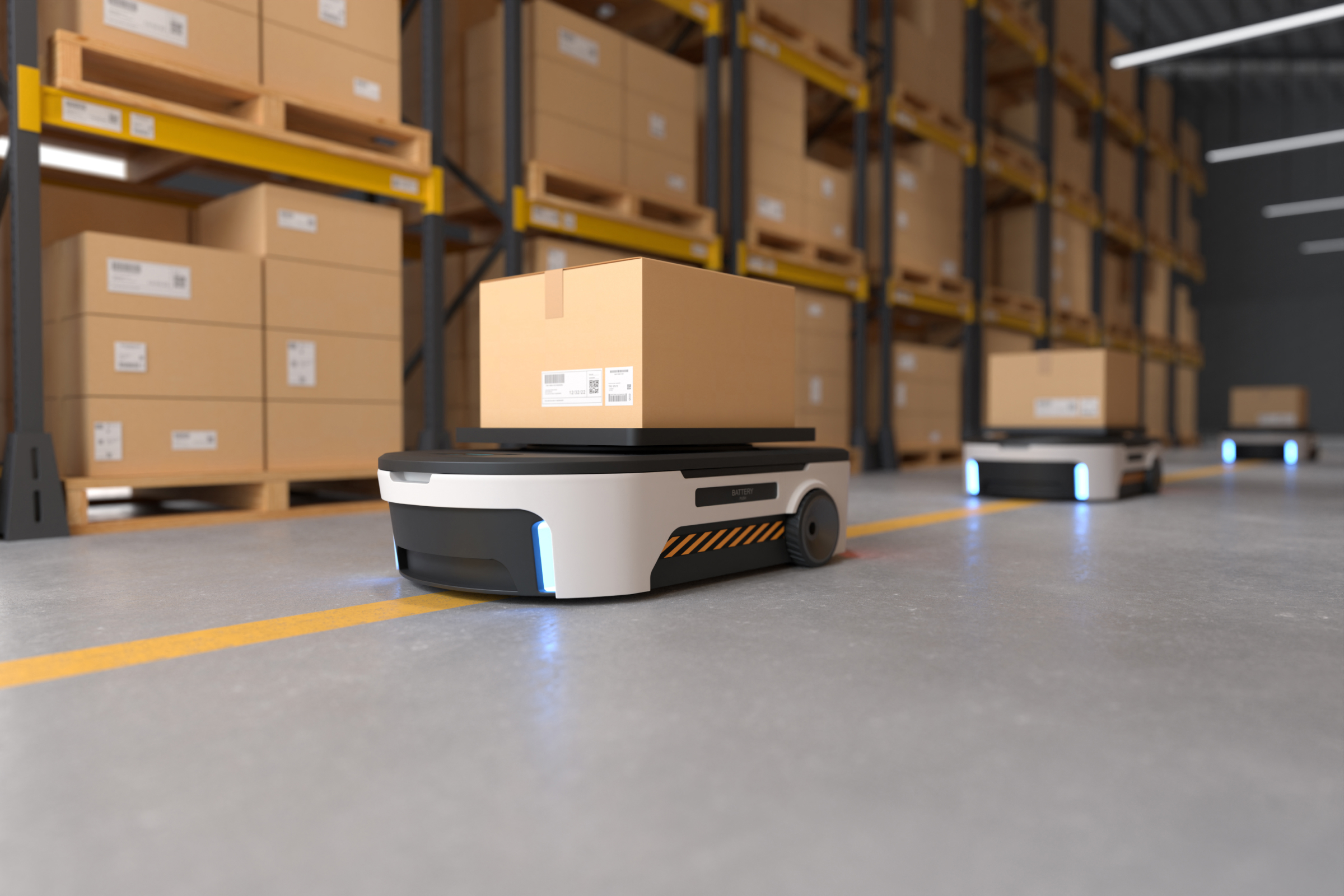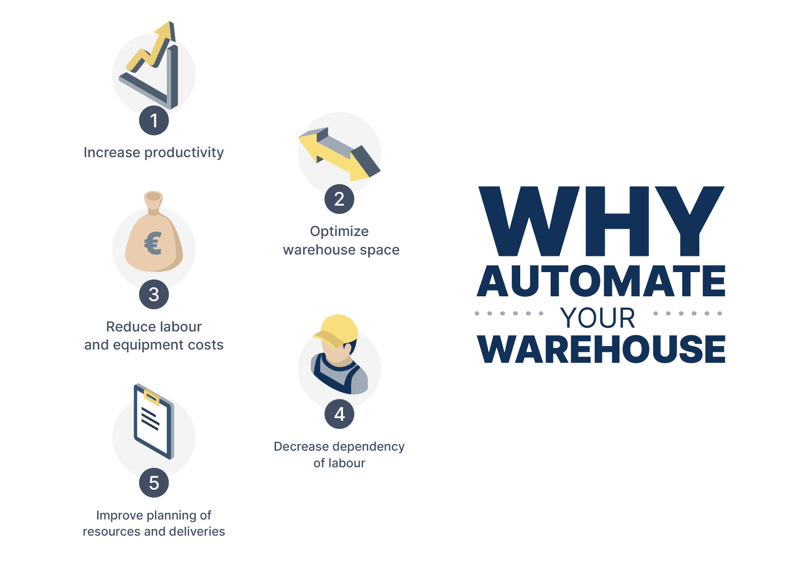- Home
- Knowledge center
- Blog
- Why automate your warehouse?
Blog
WHY AUTOMATE YOUR WAREHOUSE?
What drives changes in how you run your warehouse? Ultimately it is the behavior and expectations of your customers. Today e-commerce and omnichannel development drives constantly increasing expectations of wider ranges, higher availability and faster deliveries. At the same time individualized receiving, handling, and delivery adds complexity in warehouse operations. A challenge for any warehouse manager, to say the least. So, is a warehouse automation solutions the answer to all your problems? Let’s see.
Five whys for automating your warehouse, and five buts to consider:
-
Increase productivity
The order fulfillment process in an e-commerce warehouse is more complex than when you only handle pallets in and out. To deal with this complexity and the demand for faster and more frequent deliveries investing in goods handling automation like goods-to-man solutions, sorters and conveyors is a good idea. But depending on your product range and processes a combination of manual and automated warehouse picking might be the most effective solution.
-
Optimize warehouse space
Warehouses today need to handle a greater assortment while warehouse space gets more and more expensive, especially in urban areas. Therefore, automation solutions are often introduced as a way to reduce warehouse space. But some automation equipment (conveyors, AGV’s etc) actually might require more space.
-
Reduce labour and equipment costs
By investing in automation for decision-making and goods handling you reduce labour and manual equipment cost. But of course, this must be analyzed in comparison to the automation investment.
-
Decrease dependency of labour
In many areas, it is difficult to find labour for warehouse operations. This will only continue as more technology is introduced in warehouse processes and puts even more demands on labour expertise. With increased automation, the HR department can focus on finding fewer, but strategically important employees. But it is important to make sure that the organization’s ability for creative problem-solving and decision-making is not lost in the process.
-
Improve planning of resources and deliveries
Resource and production planning is a challenge for many warehouses since efficiency varies between different workers, and employees on sick leave disturbs planning. Investing in automation gives you a foreseeable and reliable capacity that improves resource and production planning. But, systems and equipment also break down, and solutions for support, maintenance, and upgrades must be included in the investment.
WMS is the brain, automation is the muscles
Even if warehouse automation solutions is growing rapidly within warehouses, most modern warehouses use a combination of manual and automated processes. For a more flexible use of your automation you will benefit from decisions taken as late as possible in the process, which is given by the non-reserving logic from a modern warehouse management system. This will also make optimal use of your whole warehouse combining manual and automated processes, aligning both in balance. Furthermore, you want to be able to use the same setup and logic in the automated and the manual warehouse.
Only then are you sure that manual handling, decision-making and goods handling automation will support order fulfillment in the right way at any given moment. The system should be able to make the right prioritization at any given moment and have the same visibility and flexibility for manual and automated processes. This is only possible with a WMS that controls business logic, for example location selection and stock keeping, and seamlessly integrates with goods handling automation using WES and WCS functionality. To conclude, having a good warehouse automation solution in your warehouse gives you the muscles to do the job – and a good WMS makes sure you do the job right.

